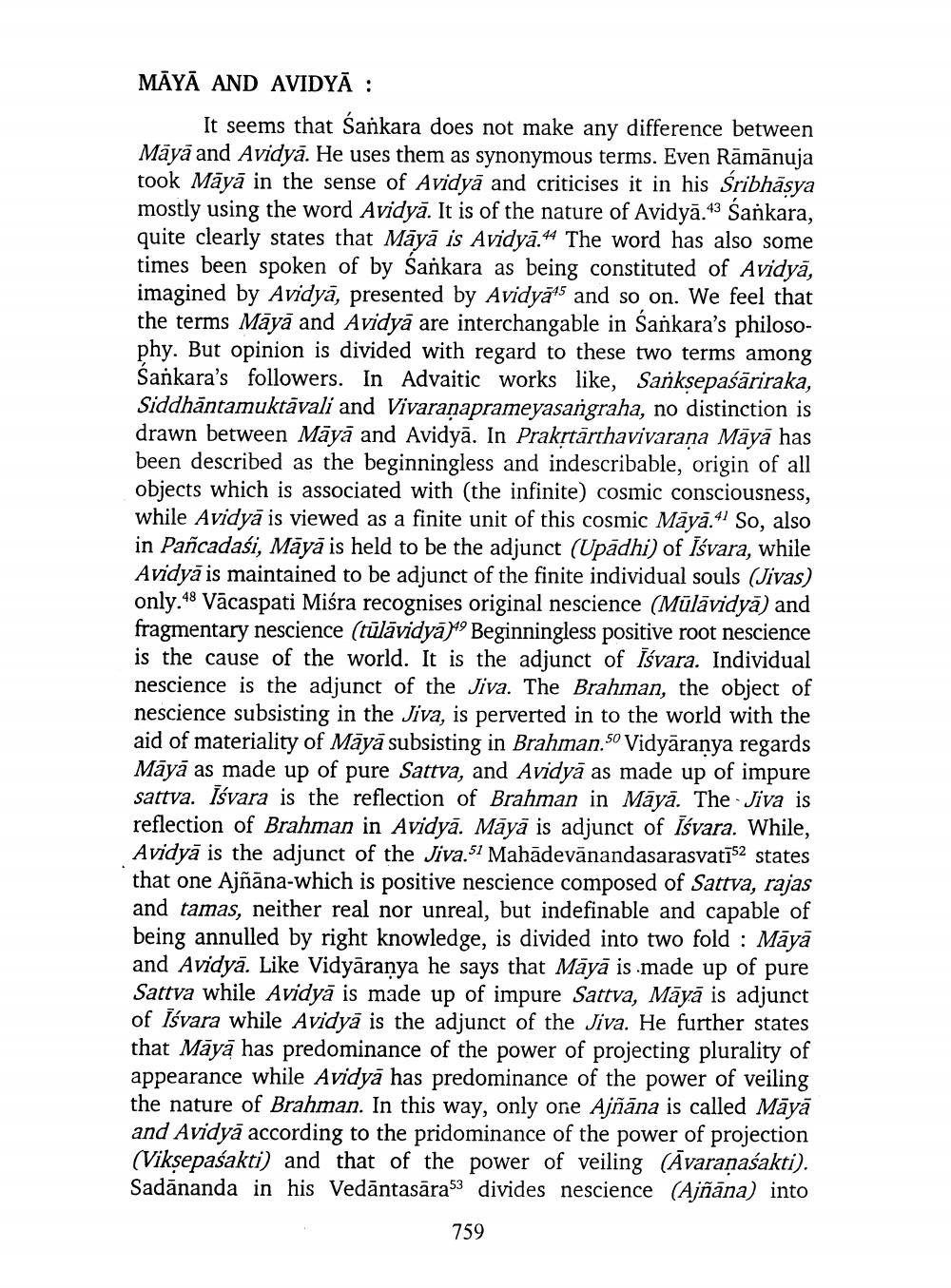________________
MĀYĀ AND AVIDYA :
It seems that Sankara does not make any difference between Mäyä and Avidyā. He uses them as synonymous terms. Even Rāmānuja took Māyā in the sense of Avidyā and criticises it in his Sribhāsya mostly using the word Avidyā. It is of the nature of Avidyā.43 Sankara, quite clearly states that Māyā is Avidyā. 44 The word has also some times been spoken of by Sankara as being constituted of Avidyā, imagined by Avidyā, presented by Avidyā45 and so on. We feel that the terms Māyā and Avidyā are interchangable in Sankara's philosophy. But opinion is divided with regard to these two terms among Sankara's followers. In Advaitic works like, Sarksepaśāriraka, Siddhāntamuktāvali and Vivaranaprameyasangraha, no distinction is drawn between Māyā and Avidyā. In Prakrtārthavivarana Māyā has been described as the beginningless and indescribable, origin of all objects which is associated with (the infinite) cosmic consciousness, while Avidyā is viewed as a finite unit of this cosmic Māyā.4. So, also in Pañcadasi, Māyā is held to be the adjunct (Upādhi) of Isvara, while Avidyā is maintained to be adjunct of the finite individual souls (Jivas) only.48 Vācaspati Miśra recognises original nescience (Mülāvidyā) and fragmentary nescience (tūlavidya)" Beginningless positive root nescience is the cause of the world. It is the adjunct of Iśvara. Individual nescience is the adjunct of the Jiva. The Brahman, the object of nescience subsisting in the Jiva, is perverted in to the world with the aid of materiality of Māyā subsisting in Brahman.5o Vidyāranya regards Māyā as made up of pure Sattva, and Avidyā as made up of impure sattva. Isvara is the reflection of Brahman in Māyā. The Jiva is reflection of Brahman in Avidyā. Māyā is adjunct of īśvara. While, Avidyā is the adjunct of the Jiva.51 Mahādevānandasarasvati 2 states that one Ajñāna-which is positive nescience composed of Sattva, rajas and tamas, neither real nor unreal, but indefinable and capable of being annulled by right knowledge, is divided into two fold : Maya and Avidyā. Like Vidyāranya he says that Māyā is made up of pure Sattva while Avidyā is made up of impure Sattva, Māyā is adjunct of Isvara while Avidyā is the adjunct of the Jiva. He further states that Māyā has predominance of the power of projecting plurality of appearance while Avidyā has predominance of the power of veiling the nature of Brahman. In this way, only one Ajñāna is called Māyā and Avidyā according to the pridominance of the power of projection (Viksepaśakti) and that of the power of veiling (Āvaranasakti). Sadānanda in his Vedāntsāra53 divides nescience (Ajñāna) into
759




